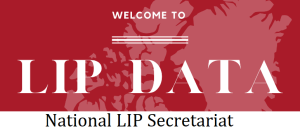Period of Immigration: Census
IMMIGRATION – ADMISSION CATEGORY
Admission Category: This refers to the name of the immigration program under which an immigrant has, for the first time, been granted the right to live in Canada permanently by immigration authorities. This is known as “permanent resident status.” In the 2016 Census of Population, data on admission category are available for immigrants who landed in Canada between January 1, 1980 and May 10, 2016.
Economic Immigrant: An admission category that includes immigrants who have been selected to contribute to Canada’s economy through their ability to meet labour market needs, including specific provincial or territorial needs; to own, manage, or build a business; to make a substantial investment; or to create their own employment.
Family Class Immigrant: An admission category that includes immigrants who were sponsored by a Canadian citizen or permanent resident and were granted permanent resident status on the basis of their relationship either as the spouse, partner, parent, grandparent, child, or other relative of this sponsor. The terms “immigrant sponsored by family” or “family reunification” are sometimes used to refer to this category.
Refugee: An admission category that includes immigrants who were granted permanent resident status on the basis of a well-founded fear of returning to their home country, such as a fear of persecution for reasons of race, religion, nationality, membership in a particular social group, or for political opinion (Geneva Convention refugees). It also includes persons who have been seriously and personally affected by civil war or armed conflict, or who have suffered a massive violation of human rights.
IMMIGRATION – IMMIGRANT STATUS
Immigrants / Permanent Residents / Landed Immigrants: Refers to persons who are not Canadian citizens by birth but who have been granted the right to live in Canada permanently by immigration authorities. Non-permanent or temporary residents, such as those from other countries who have work permits or study permits, as well as people who are refugee claimants, are not classified as immigrants.
Non-Permanent Residents / Temporary Residents: Refers to persons from another country who have a work permit (e.g., temporary foreign workers), a study permit, or who are refugee claimants or asylum seekers. Note that Immigration, Refugees and Citizenship Canada uses the term “temporary resident,” while Statistics Canada uses the term “non-permanent resident.”
Recent Immigrants: Refers to immigrants who came to Canada up to five years prior to a given census year. For the 2006 census, recent immigrants are landed immigrants who arrived in Canada between January 1, 2001 and census day, which was May 16, 2006. For the 2016 census, recent immigrants are landed immigrants who arrived in Canada between January 1, 2011 and census day, which was May 10, 2016.
Refugee Claimants / Asylum Seekers: Refers to persons who claimed refugee status upon or after their arrival to Canada but who had not been granted permanent resident status at the time of the census. Asylum seekers are included in the “non-permanent resident” population and not in the immigrant population.
SOURCE DATA
2006 Dashboard Data: Statistics Canada. 2006. Census of Population. Custom tabulations.
2016 Dashboard Data: Statistics Canada. 2016. Census of Population. Custom tabulations.
2021 Dashboard Data: Statistics Canada. 2021. Census of Population. Custom tabulations.
Definitions: Statistics Canada. 2023 (updated). Dictionary, Census of Population, 2021. Website.

 Period of Immigration: Census in the Sustainable Development Goals
Period of Immigration: Census in the Sustainable Development Goals
Click on the SDG to reveal more information
10. Reduce inequality within and among countries
The international community has made significant strides towards lifting people out of poverty. The most vulnerable nations – the least developed countries, the landlocked developing countries and the small island developing states – continue to make inroads into poverty reduction. However, inequality still persists and large disparities remain in access to health and education services and other assets.
Additionally, while income inequality between countries may have been reduced, inequality within countries has risen. There is growing consensus that economic growth is not sufficient to reduce poverty if it is not inclusive and if it does not involve the three dimensions of sustainable development – economic, social and environmental.
To reduce inequality, policies should be universal in principle paying attention to the needs of disadvantaged and marginalized populations.
Related Period of Immigration: Census Targets
By 2030, empower and promote the social, economic and political inclusion of all, irrespective of age, sex, disability, race, ethnicity, origin, religion or economic or other status
Ensure equal opportunity and reduce inequalities of outcome, including by eliminating discriminatory laws, policies and practices and promoting appropriate legislation, policies and action in this regard
Adopt policies, especially fiscal, wage and social protection policies, and progressively achieve greater equality



